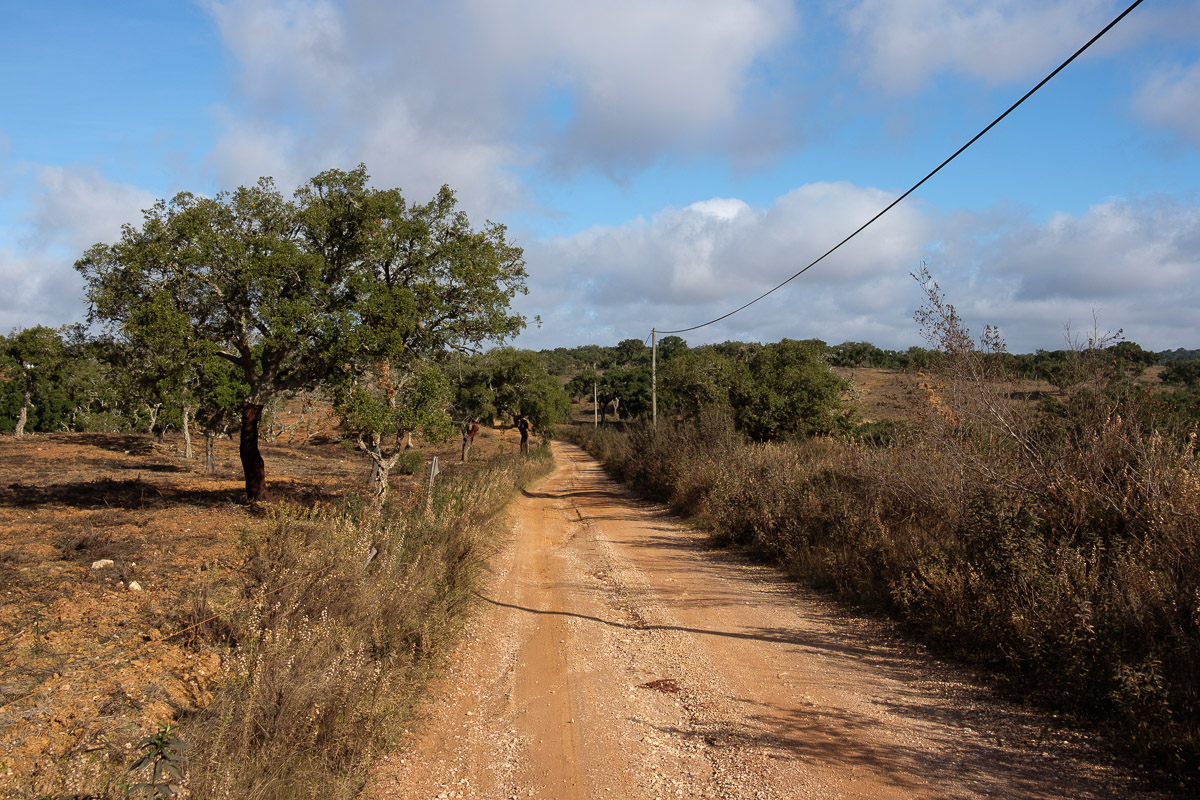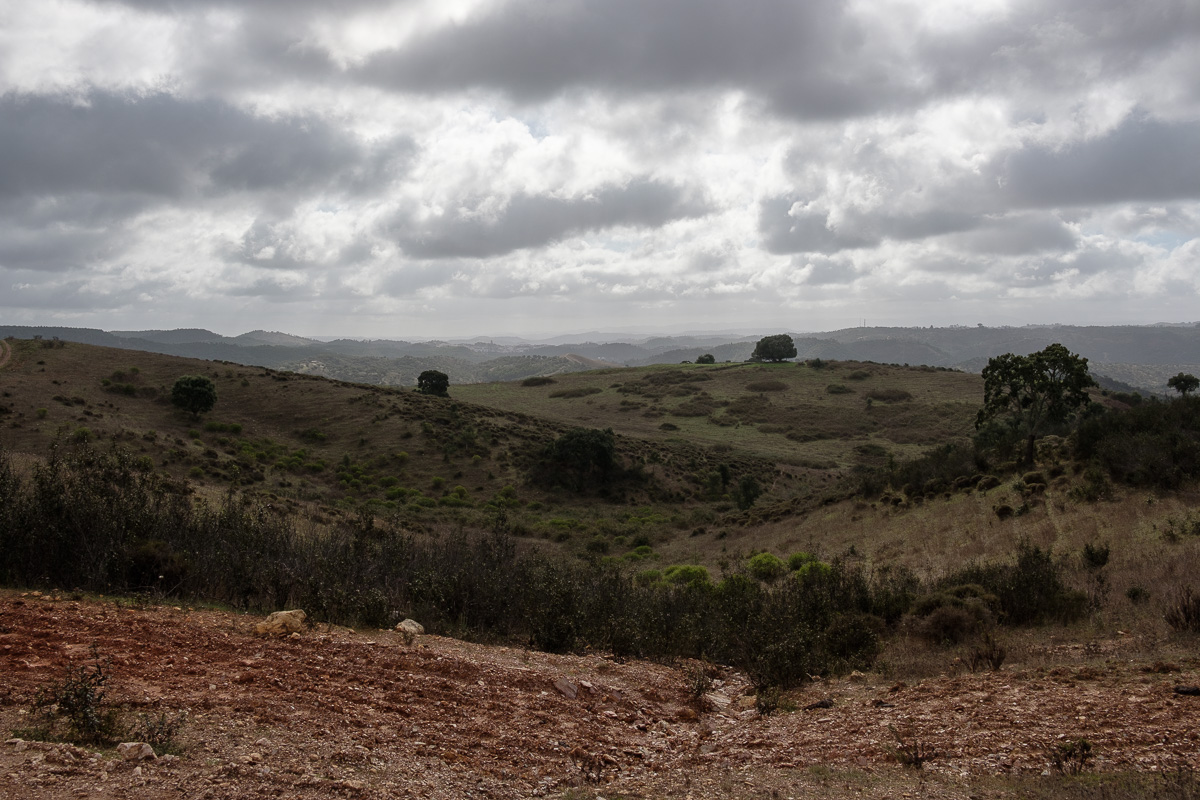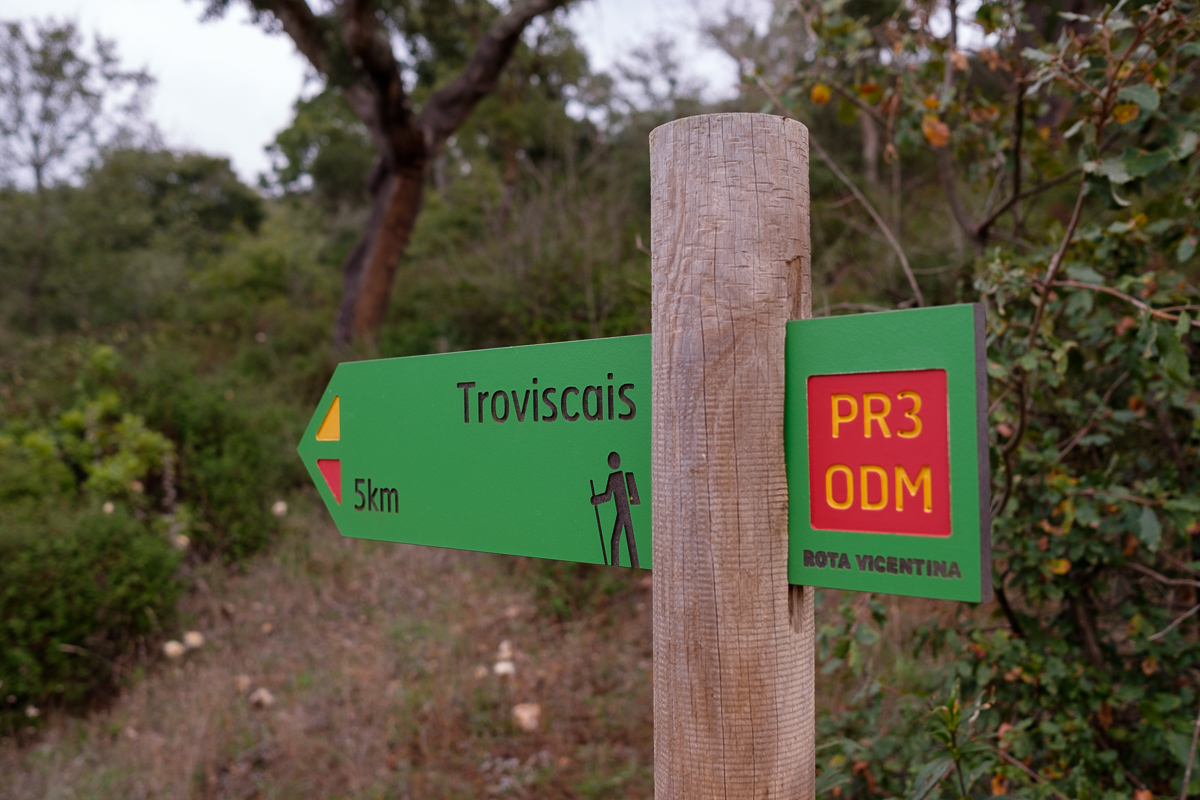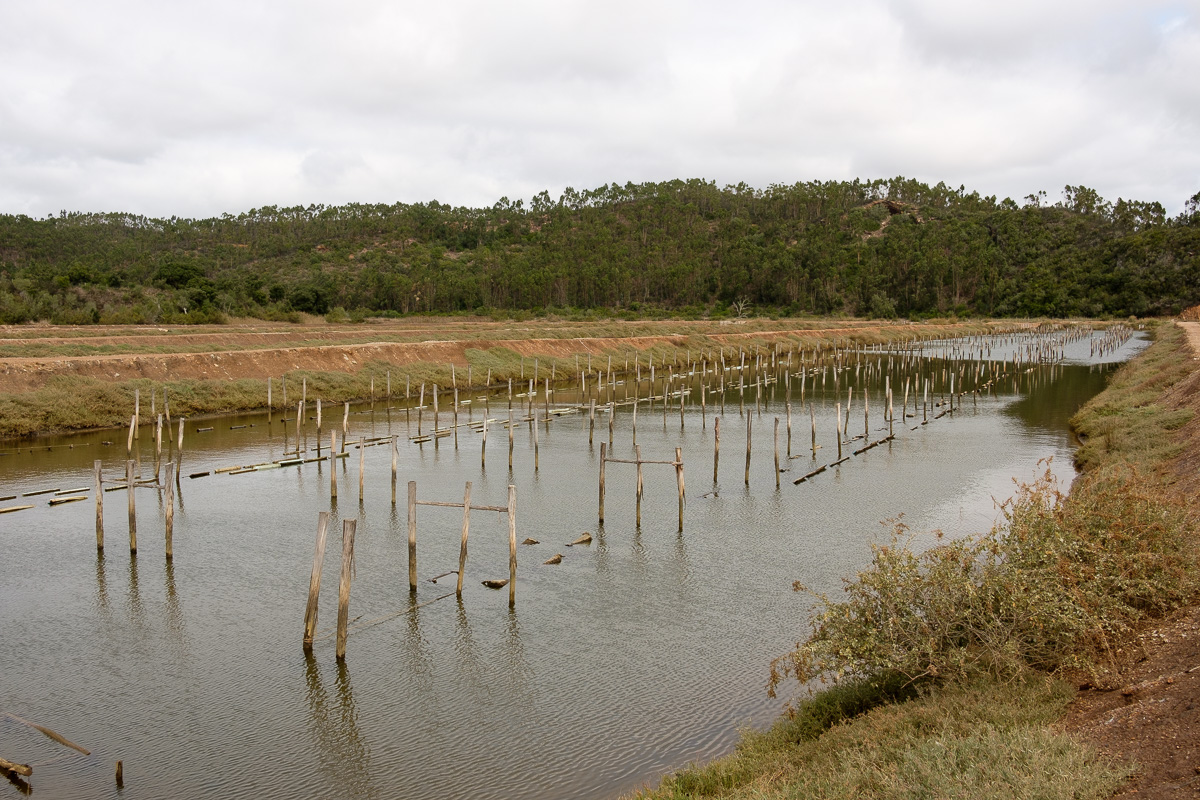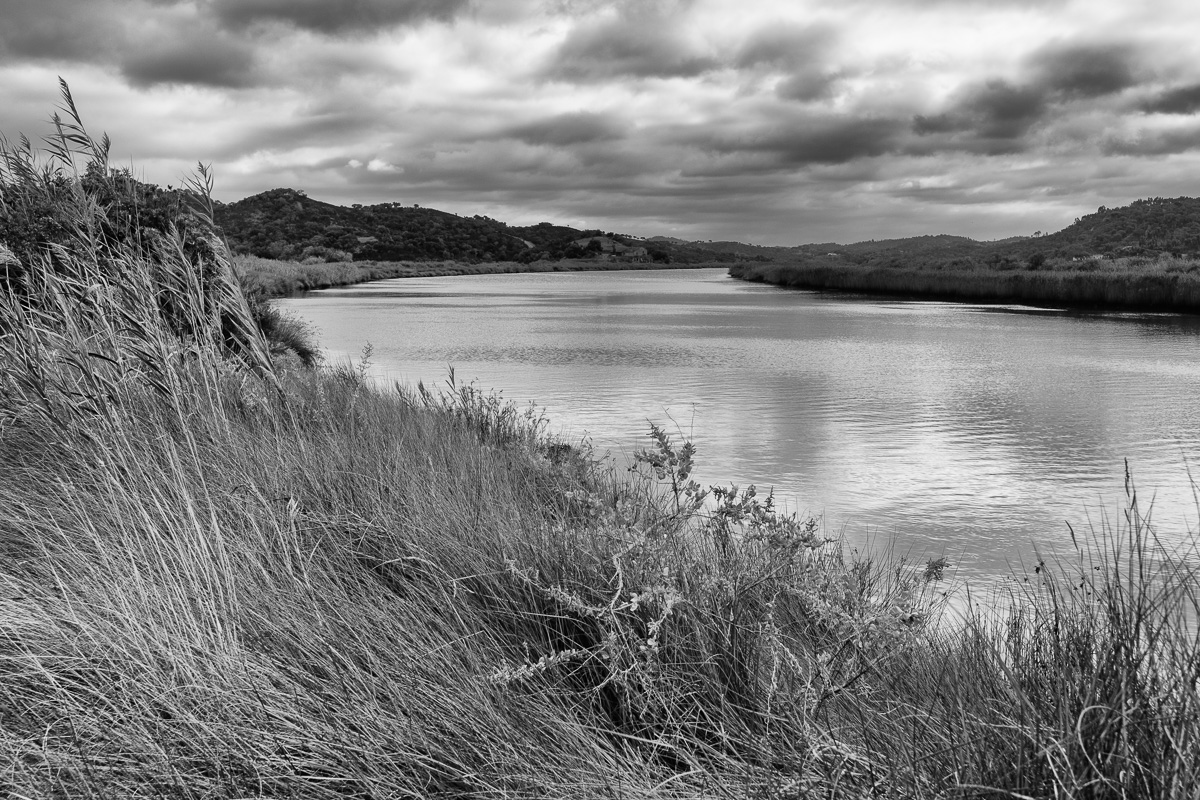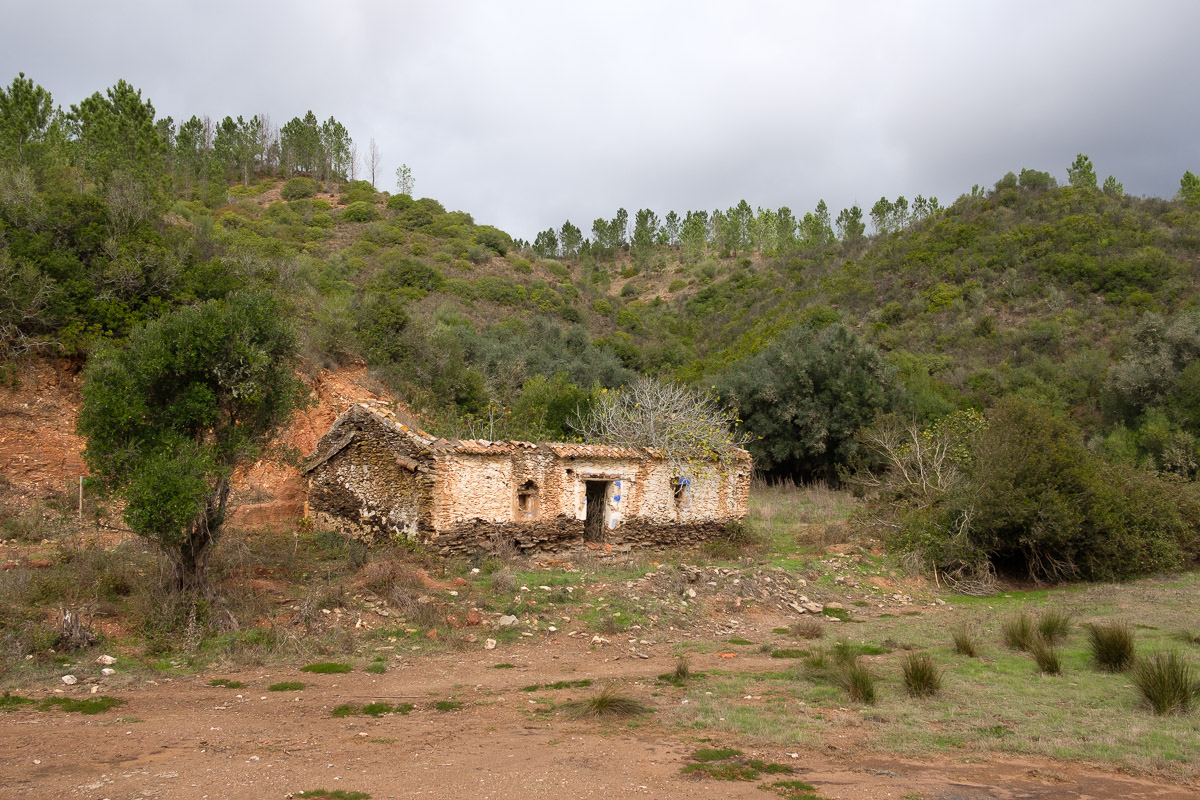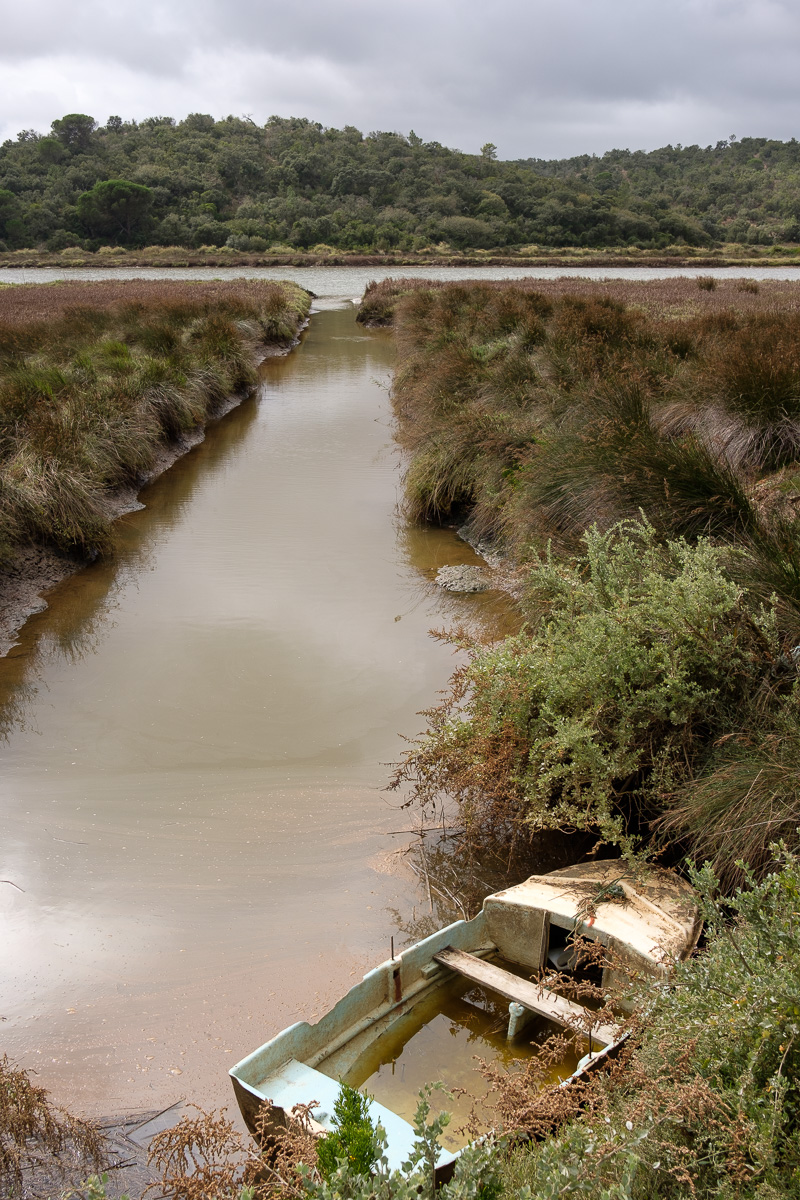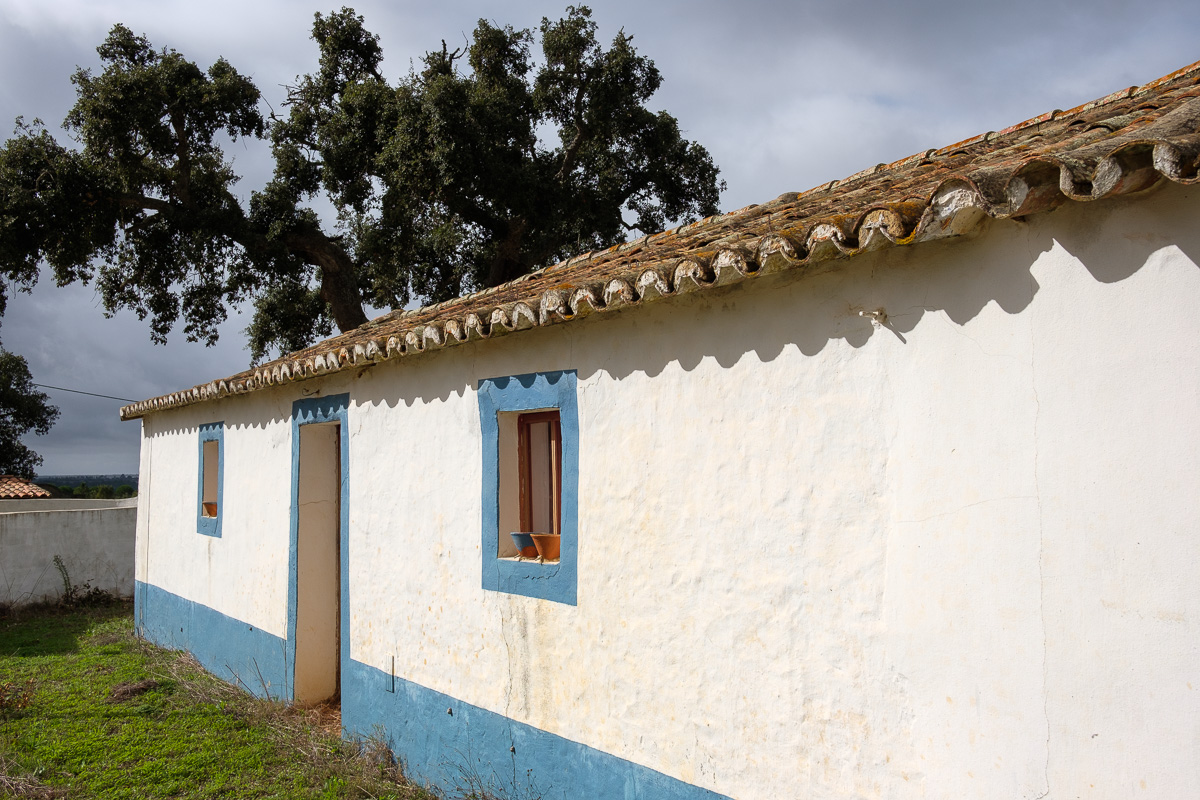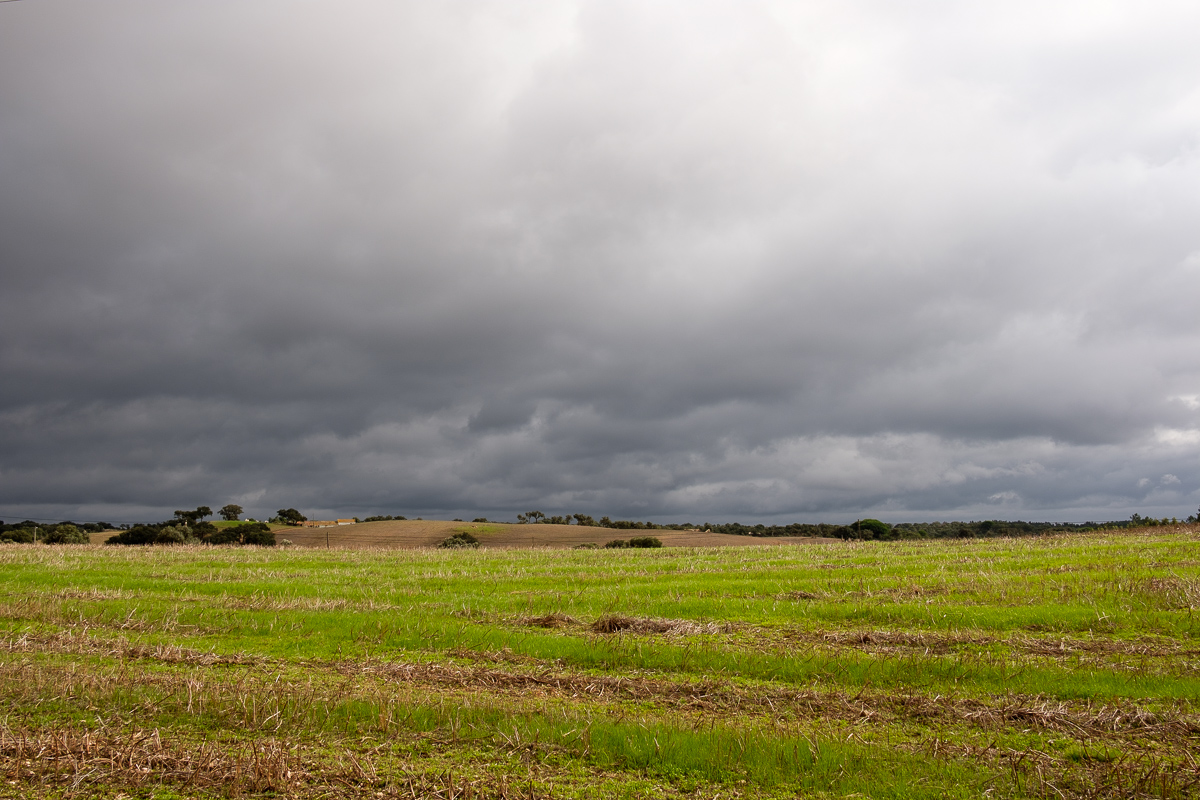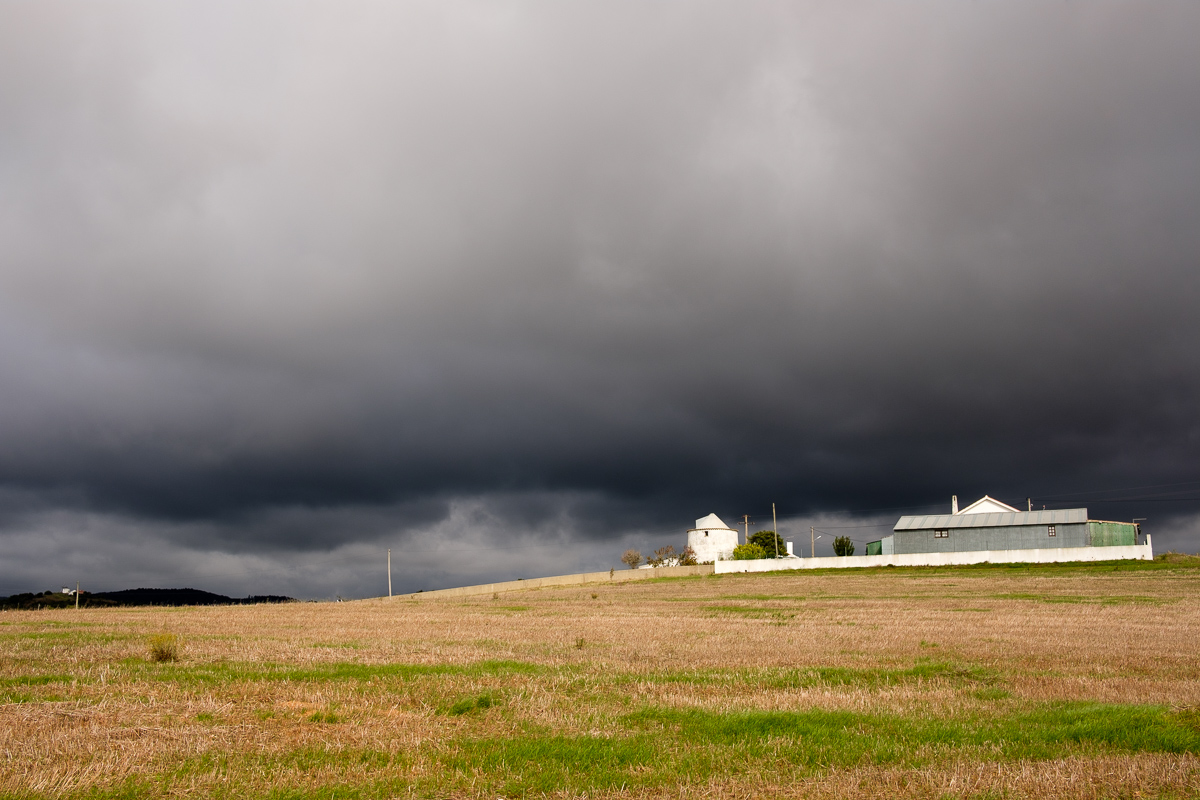The municipality of Odemira, in the coastal Alentejo region, is rich in trekking possibilities. In later years, an effort has been made to increase the number of sign – posted pedestrian circuits, which allow the visitors to get acquainted with a unique countryside. Odemira offers the possibility of experiencing the interior mountainous areas (or Serras) in close contact with the coastal regions. This brings together a very peculiar heritage and ways of living, as the local population masters both farming, animal husbandry, and fishing, for example.
In this instance I am going to write about a trek I recently made near the small village of Troviscais, well inside the mountainous countryside. This circuit is labelled as PR3 ODM, is 11.5 km long, and is categorized as “difficult” due to the topographic profile (from 200m high to 0m, and back to 200m).
The trip starts in this village, which is surrounded by cork oak and holm oak fields, interspersed with oaks that provide the acorn feed for the famous porco preto breed (black pig). This type of Mediterranean farming landscape is being revitalised, in opposition to the vast plantations of eucalyptus trees, which are less fire resistant. They also provide the sort of smaller scale production that is typical of the local communities.
It had rained the previous day, so everything looked fresh and with vivid colours. The path starts to climb towards the highest point of the trek, which offers great views to the southern Serras, climbing in the haze towards Monchique (at 900m altitude) in the hazy distance. Somewhere nearby, peaceful cows graze in the pasture. One of the most interesting parts of the trip starts as we begin to descend towards the river Mira; this is a less used part of the rural path, taking us into a genuine Mediterranean wood, with abundant oaks and Arbutus trees. The latter hold abundant red and orange ripe fruits, which are very photogenic and tasty! The arbutus fruit, called medronho in Portuguese, is locally used to make a special aguardente, or brandy.
At the final approach to the river Mira, the path becomes more elusive, as it winds its way around several lagoons where oysters are cultivated. This is part of a recent (2013) project that reactivated an important activity from the 1960’s and 1970’s. Most of the cultivated oyster is from Japanese origin, the Cassostrea gigas. Yearly production is around 1,000 tonnes, and most of it is exported to France. It is interesting to see how the water from the river is diverted into artificial lagoons. The silence is only perturbed by the cries of the birds; by the way, this is a prime area for bird watching, with several species of migratory birds, such as the pisco-de-peito-azul (bluethroat). This stretch along the river is indeed one of the highlights of the trek, and is a great place to picnic, as we are halfway along the trip.
From the river, the path starts to climb again, crossing some ruined and abandoned houses, but also some new ones that are hidden in the woods. As we climb, the views over the river valley are beautiful. From this place, it is a straight walk back to Troviscais, under menacing and brooding skies that promise thunder and rain. Luckily, they were just that (menaces), and we managed to reach Troviscais as dry as we had left in the morning.
For those wanting to visit the area, below is the link of the website that describes the trek, and from which more information can be obtained. This is a highly recommended trek, with plenty of interesting things to see and experience, well in the heartland of the region of Odemira. A fine example of “country and farm life near the coast”. It is part of the longer Rota Vicentina, a network of treks that hugs the entire coastline of SW Portugal.
Finally, in terms of photographic gear, I travel light these days, and only took with me the following: Fuji X-Pro2 with 23 f2 lens; Fuji X-H1 and 56 f1.2 lens. Nothing beats the combination of a wide lens plus short telephoto lens.
http://pt.rotavicentina.com/etapa-troviscais-ao-mira-2610.html
